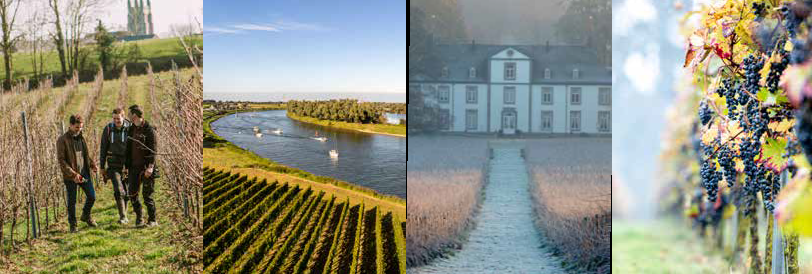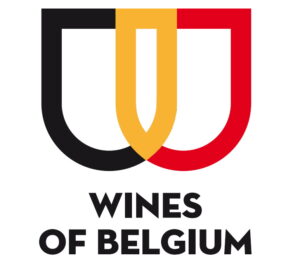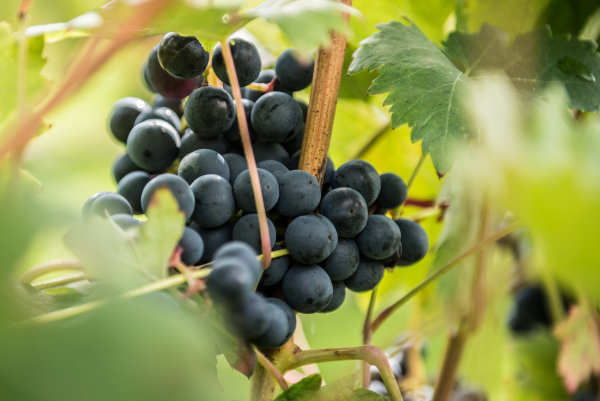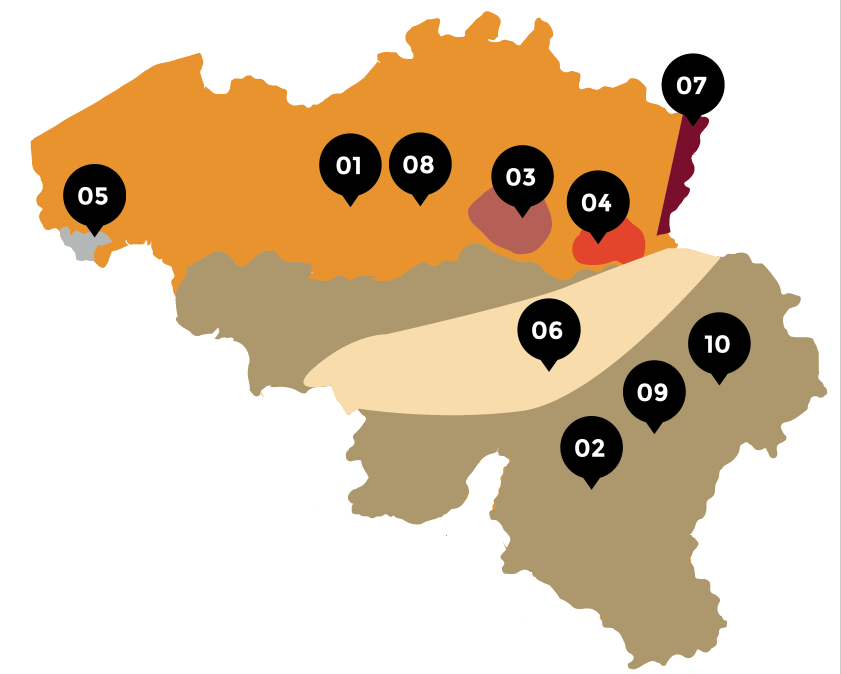
Wines of Belgium
Winemaking in Belgium
When people think of Belgium, they often refer to our remarkable beers, delicious chocolates and the best French fries in the world. Correctly so, but what more and more people are starting to discover, is that Belgian wine has earned a spot in that list as well. Time to let more people in on that secret…

Belgium is a small country, so our wine industry is rather small as well – but it is growing rapidly. In 2021 there were a total of 237 registered winegrowers in our country, amateurs and (semi-)professional producers combined. Together, they own 695 hectares of vineyards – more than five times as many as ten years ago. In 2018 and in 2020 our winemakers produced over two million liters of Belgian wine (around 450,000 cases).
In a small country like Belgium there is no room for large scale wineries. Only a handful of winegrowers own thirty hectares of land or more; the average size is about four hectares. This means that Belgian winemakers simply need to focus on quality and take an artisanal approach. Government agencies and trade organizations stimulate this focus on quality as well.

Lots of sparkling and still white wines
Due to our location – most of Belgium is above 50 degrees north latitude, long considered to be the northern limit for making wine – the production of sparkling wines is very popular here. (Less sunlight means less sugar, which emphasizes the freshness of the grapes even further). In fact, sparkling wines account for about 45 percent of the total production. 41 percent are still white wines. Next come red wines with 8.5 percent, and rosés with 5.5 percent. (Based on 2021 harvest data)
The chilly and relatively wet climate also explains the proliferation of mold and mildew resistant grape varieties, such as johanniter, regent and solaris. Some Belgian winemakers have already been working with those varieties for decades now, and have long since learned to make excellent wines with them. Because these grapes are better adapted to the local climate, they also need less treatments with pesticides, allowing for a sustainable and environment friendly way of working.
Among the classic grape varieties, the most popular are similar to some nearby renowned wine regions, such as Burgundy and Alsace: chardonnay, pinot varieties (including auxerrois), müller-thurgau, and so on. In fact, there is a tremendous diversity in Belgian wines, but they all have an undeniable cool climate touch – including relatively low alcohol percentages – and show great quality.
Appellations
Belgium has ten official appellations, each with its own regulations, to guard the quality of wines from these regions. There are two Protected Geographical Indications (PGIs):
- Vlaamse Landwijn (Flemish Country Wine) (number 1️⃣ on the map below)
- Vin de Pays des Jardins de Wallonie (Country Wine from the Gardens of Wallonia) 2️⃣
There are also eight Protected Designations of Origin (PDOs):
- Hagelandse wijn (Wine from the Hageland area, near Brussels) 3️⃣
- Haspengouwse wijn (Wine from the Haspengouw area, in the North East of Flanders) 4️⃣
- Heuvellandse wijn (Wine from the Heuvelland area, near the South coast) 5️⃣
- Côtes de Sambre et Meuse (Wine from the banks of the Sambre and Meuse, in Wallonia) 6️⃣
- Maasvallei Limburg (unique in Europe: this PDO covers two countries – Belgium and the Netherlands) 7️⃣
- Vlaamse Mousserende Kwaliteitswijn (Flemish Quality Sparkling Wine) 8️⃣
- Vin Mousseux de Qualité de Wallonie (Quality Sparkling Wine from Wallonia) 9️⃣
- Crémant de Wallonie 🔟


About the VZW Belgische Wijnbouwers
Since 2009, the non-profit organization VZW Belgische Wijnbouwers (Federation of Belgian Winegrowers) has been working to improve the quality of Belgian wine, to create a professional framework in which our winegrowers can optimally reap the benefits of their hard labor and to increase the awareness of Belgian wine among consumers, both at home and abroad. To this end, the association organizes numerous activities: interesting and useful training courses, events (such as this group stand at Prowein), bringing together wine growers with questions or needs, trying to clarify and simplify legislative and administrative matters, negotiating interesting group purchases, etc.
For more information and a list of our members, including their contact details, go to: www.belgischewijnbouwers.be (in Dutch only)